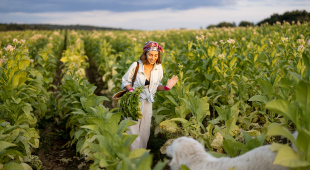Peatlands play a significant role in carbon emission sequestration. Through wetland management of peatlands, it is possible to preserve or rebuild the peat body while simultaneously generating agricultural products. Dr. Jan Köbbing presented the paludiculture management system (palus lat. for swamp) and the situation in the partner regions of the Netherlands, Denmark, and Germany as part of the BBoBB project at the Bioeconomy Conference in Denmark.
In paludiculture, plants are cultivated that thrive under wet conditions and yield good harvests. These include peat mosses (raised bogs), fen plants such as reeds and cattails, as well as others.
In Germany, 12.8 million hectares of peatlands emit approximately 53 million tons of CO₂ annually, accounting for 6.7% of national emissions. Since 2017, the 3N Competence Center has been engaged with this topic and has since served as the central competence hub for paludiculture in Lower Saxony.
As part of various projects, practical plots with cattails have been established, where different parameters are measured and analyzed. These include yield assessments, greenhouse gas emission measurements, soil analyses, water quality, economic viability, biodiversity, and other factors.
Beyond cultivation, various applications of cattails are being investigated, such as their use in growing media for peat substitution, as a partial fiber component in biopolymer composites, and their suitability as insulation material in the construction industry. However, due to the lack of building physics approval for cattails in Germany, their use is currently only possible through case-by-case approvals. A consequence of the absence of guaranteed purchase agreements is that large-scale cultivation of cattails on peatlands has not yet been implemented. Additional hurdles include the lack of agricultural subsidies and the absence of CO₂ savings compensation.
Similar challenges exist in the partner regions of the Netherlands and Denmark. Peatlands account for 7.3% of the land area in the Netherlands. While the potential for paludiculture exists, there is significant competition with traditional agriculture, which slows down or stagnates the cultivation of cattails.
With 4.7% of land area covered by peatlands, Denmark also has significant potential for paludiculture. However, cattails are not yet a notable option in the construction or building materials sector. Their current applications are limited to biogas production, animal feed, food products, and minimal use in construction and insulation materials. The timing of harvest plays a crucial role in determining the quality and subsequent use. Harvesting in spring or early summer increases the biogas potential of cattails, while a later harvest promotes the use of fibers for construction or insulation materials due to significantly lower moisture content.
The BBoBB project aims to gather critical insights for the insulation and biopolymer sectors, ideally leading to positive developments in cultivation and marketing. Demonstration buildings and materials are being developed as part of the project. Simultaneously, obstacles and restrictions, from cultivation to marketing and product application, are being identified and addressed to integrate cattails into agricultural practices.

